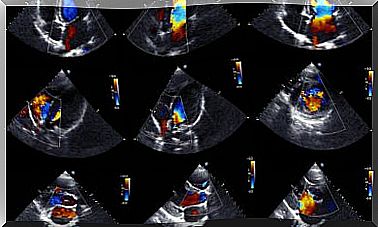Amphotericin B And Its Use In Fungal Infections
Amphotericin B is an antibiotic and antifungal drug with a polyene structure of choice in systemic fungal infections such as aspergiliosis. Also used for its effectiveness in serious fungal infections.
It is an antibiotic that is obtained by the fermentation of the bacterium Streptomyces nodosus . Its name, amphotericin, is due to the fact that it is an amphipathic molecule, that is, it has a lipophilic and a lipophobic part. This is due to the presence of an acid group and an amino group in its structure, which allows the product to be relatively soluble in water.
We will see the following characteristics of amphotericin B:
- Mechanism of action.
- Pharmacokinetics.
- Adverse reactions.
- Interactions
Mechanism of action of amphotericin B

Amphotericin is a high-potency and broad-spectrum drug, that is, it is not specific to a type of microorganism, it can be effective against infections developed by different fungi.
As we have already discussed, it is an amphipathic molecule. It is the lipophilic part, that is, the one that is soluble in water, which binds to the ergosterol molecules. This ergosterol is a characteristic molecule of the membranes of fungi.
Amphotericin has a greater affinity for fungal membranes than others, but even so, it also damages human cell membranes. Alters the permeability of sodium, potassium and hydrogen ions.
It is a fungicidal or fungostatic drug depending on the sensitivity of the fungus and the concentration of drug that is administered. That it is fungicidal means that it causes the death of the fungus. On the other hand, unlike the previous one, fungostatic activity inhibits growth without causing death.
Pharmacokinetics
This antibiotic is administered intravenously, and if this route is not possible, the spinal route is used. It could be administered orally, but it is poorly and irregularly absorbed, resulting in insufficient plasma concentrations.
The peak plasma concentrations are observed within 2-3 hours after intravenous administration, have no evidence of drug accumulation. It is given by intravenous infusion over 4 to 6 hours in order to minimize adverse effects.
On the other hand, amphotericin is bound in a high proportion to plasma proteins, approximately 90-95%. That is why caution should be exercised in the event that you are taking another drug that also binds to proteins. A co-administration of both can displace amphotericin, leading to toxicity.
The metabolism of this drug is not well understood. A small amount is excreted in the bile and another through the kidneys very slowly.
Adverse reactions

A flu-like picture of chills, fever, nausea, and vomiting may develop immediately after administration by intravenous infusion. They are mild or moderate symptoms that disappear during the first two days of treatment.
Due to these effects, the administration of amphotericin B is usually accompanied by NSAIDs, antiemetics, antihistamines or corticosteroids in order to reduce and control them. Patients admitted to the hospital to be treated with amphotericin should be given a small dose beforehand to see their reaction to the treatment.
In addition to these flu symptoms, it has other serious adverse reactions such as:
- Nephrotoxicity: manifested with an increase in plasma creatinine and uric nitrogen. In addition, it causes hypokalemia, hyponatremia, and metabolic acidosis.
- Thrombophlebitis: to avoid these clotting problems, it is administered with corticosteroids and heparin.
It can also cause alopecia, bone pain, rash, anaphylactic reactions, bronchospasm and also the extravasation of amphotericin B can cause local irritation.
Interactions

Amphotericin is a drug with which you have to be very careful since it is a drug that interacts with many other drugs. An additive nephrotoxic effect can occur when administered, together, with aminoglycosides such as gentamicin, tobramycin or amikacin for example.
The dose of amphotericin B should be reduced in the event of renal impairment. More severe myelotoxicity and nephrotoxicity have been observed with zidovudine when administered with amphotericin B.
Cyclosporine also interacts with amphotericin. There is an increase in serum creatinine, although it could also be due only to high doses of cyclosporine.
On the other hand, it can also interact with drugs such as loop diuretics, cisplatin, corticosteroids or ACTH, and hypocalcemia can be observed. Apart from those mentioned, there are many drugs that interact with amphotericin causing toxic effects in the patient.









